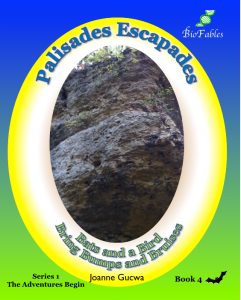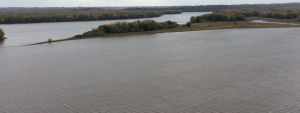 Seven-year-old Mallory learns that taking a nine-pound rock from a public park is a lot different from collecting a few pebbles or stones. His twin sister, Melody, doesn’t think it’s such a big deal, but apparently everyone else does. Mallory and his Dad travel back to the Indiana Dunes both to follow up with the local police sergeant on the lost item that Mallory found and also to fulfill Mallory’s hour of public service to settle his debt for removing the rock from the park.
Seven-year-old Mallory learns that taking a nine-pound rock from a public park is a lot different from collecting a few pebbles or stones. His twin sister, Melody, doesn’t think it’s such a big deal, but apparently everyone else does. Mallory and his Dad travel back to the Indiana Dunes both to follow up with the local police sergeant on the lost item that Mallory found and also to fulfill Mallory’s hour of public service to settle his debt for removing the rock from the park.
Checking out a bat cave isn’t such a good idea if your dog is along. Humans may not hear the bats squealing, but dogs sure do. Rufus takes off in the opposite direction. Mallory is off to the rescue, except that Mallory himself needs rescuing as he tumbles into a sinkhole.
The Palisades trail gets steeper and steeper. Suddenly, there it is. The great Mississippi River. “How wide is the  river?” Melody wants to know, reluctant to leave the magnificent view. She and her brother get a lesson on estimating distances, based on comparing it with things you already know, such as car lengths and soccer fields.
river?” Melody wants to know, reluctant to leave the magnificent view. She and her brother get a lesson on estimating distances, based on comparing it with things you already know, such as car lengths and soccer fields.
BioFables children’s books focus on illuminating Sciences (STEM: Science, Technology, Engineering, Math) principles through fun stories. Parents, you know from experience that learning the subject matter that we call Sciences is a good first step. Understanding Humanities subjects helps us know how best to apply Sciences principles to the practical needs of the external world. And understanding one’s internal Values/Behaviors helps us to make things happen.
Every BioFables book weaves lessons derived from these interconnected (and often hidden) core disciplines into realistic stories that children relate to. Parents, you can use the free resources of this site to uncover those nearly-invisible lessons. They will help you prepare your children for happy, productive, rewarding and well-balanced lives.
If you’re ready to purchase Palisades Escapades, please click on the Buy Palisades Escapades icon to go directly to Barnes and Nobles’ Palisades Escapades page. (Your purchase of Palisades Escapades helps support our ongoing efforts to contniue expanding the wealth of this site’s free resources for homeschooling and all parents who are dedicated to the intellectual growth of their children)
If you’d like to learn more about using the considerable Palisades Escapades resources at this site, please read on.
Palisades Escapades Resources
The ten chapters in Palisades Escapades contain nearly a hundred practical mini-lessons and pop-up lessons woven throughout Palisades Escapades. We call these practical lessons Knowledge Nuggets. These Knowledge Nuggets contain specific information that readers can apply to their everyday lives. They may be in the form of a mini-lesson, with simple explanations of a specific concept, or as a quick, unplanned pop-up lesson.
Four sets of tables and lists in the Palisades Escapades Knowledge Gateways page help you to place a given Knowledge Nugget within the greater realm of learning.
-
- Chapter-by-Chapter: Sciences, Humanities, Values/Behaviors
- Entire Palisades Escapades: Sciences topics
- Entire Palisades Escapades: Humanities topics
- Entire Palisades Escapades: Values/Behaviors topics
Please visit Site Tips for even more ways to mine the wealth of information available on this site.

